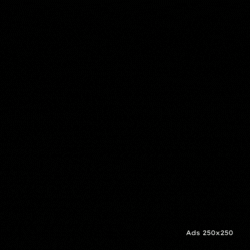For centuries, tarot card reading has actually been made use of as an effective device for gaining understanding into the past, existing, and future. Whether you are a seasoned practitioner or an interested beginner, diving into the world of tarot card can be a remarkable and informing experience. In this comprehensive overview, we will certainly explore the history of tarot card, the meaning behind the cards, different tarot spreads, and just how to interpret the cards in a reading.
The History of Tarot card
While the beginnings of tarot are shrouded in mystery, it is believed to have originated in 14th century Europe. Originally made use of as a card game, tarot eventually advanced right into a device for divination and spiritual assistance. The conventional tarot card deck contains 78 cards, divided right into the Major Arcana and the Minor Arcana.
The Significant Arcana cards stand for considerable life events and spiritual lessons, while the Minor Arcana cards concentrate on everyday experiences and difficulties. Each card in the deck has its own unique importance and definition, making tarot card an abundant and complicated system for self-reflection and exploration.
Today, tarot card analysis has actually gotten appeal as a form of therapy, spiritual advice, and individual growth. Many individuals transform to tarot to obtain clarity on difficult situations, make crucial choices, or simply seek guidance on their life course.
- The Major Arcana: These 22 cards stand for global archetypes and spiritual principles. They frequently represent significant life occasions and personal growth.
- The Minor Arcana: Included 56 cards, the Minor Arcana focuses on daily experiences and challenges. It is split into four fits: Sticks, Mugs, Swords, and Pentacles.
Meaning in Tarot Card Cards
Each tarot card is rich in significance and imagery, designed to communicate specific definitions and messages. Understanding the significance behind the cards is crucial for translating a tarot analysis precisely. Below are a few crucial icons frequently found in tarot card cards:
The Fool: Represents clean slates, spontaneity, and taking a jump of belief.
The Illusionist: Indicates symptom, imagination, and the power of purpose.
The High Priestess: Represents intuition, enigma, and hidden knowledge.
The Emperor: Represents authority, structure, and leadership.
Sorts Of Tarot Card Spreads
There are countless tarot spreads that can be utilized for different kinds of readings, each providing an unique point of view on the scenario handy. Some prominent tarot spreads consist of:
The Celtic Cross: A flexible spread that offers understandings into the past, existing, and future, along with obstacles and prospective end results.
The Three-Card Spread: A basic yet efficient spread that offers quick solution to particular concerns or situations.
The Connection Spread: Specifically made to obtain insight into partnerships and dynamics in between two people.
Analyzing a Tarot Card Analysis
When analyzing a tarot card reading, it is necessary to take into consideration the importance of each card, the position it inhabits in the spread, and the overall power of the analysis. Pay attention to reoccuring motifs, patterns, and signs that may arise throughout the analysis.
- Trust fund your instinct: Tarot is a highly instinctive technique, so trust your reactions and sixth sense when analyzing the cards.
- Keep unbiased: Come close to the reading with an open mind and want to discover different interpretations and perspectives.
- Journal your analyses: Maintaining a tarot card journal can aid you track your live psychic progression, insights, and growth over time.
Conclusion
Whether you are attracted to tarot for spiritual advice, self-reflection, or individual development, the art of tarot card reading uses an effective device for acquiring insight right into the covert facets of life. By recognizing the background of tarot, the importance behind the cards, various tarot card spreads, and exactly how to analyze a reading, you can unlock the wisdom and guidance that tarot has to provide.


